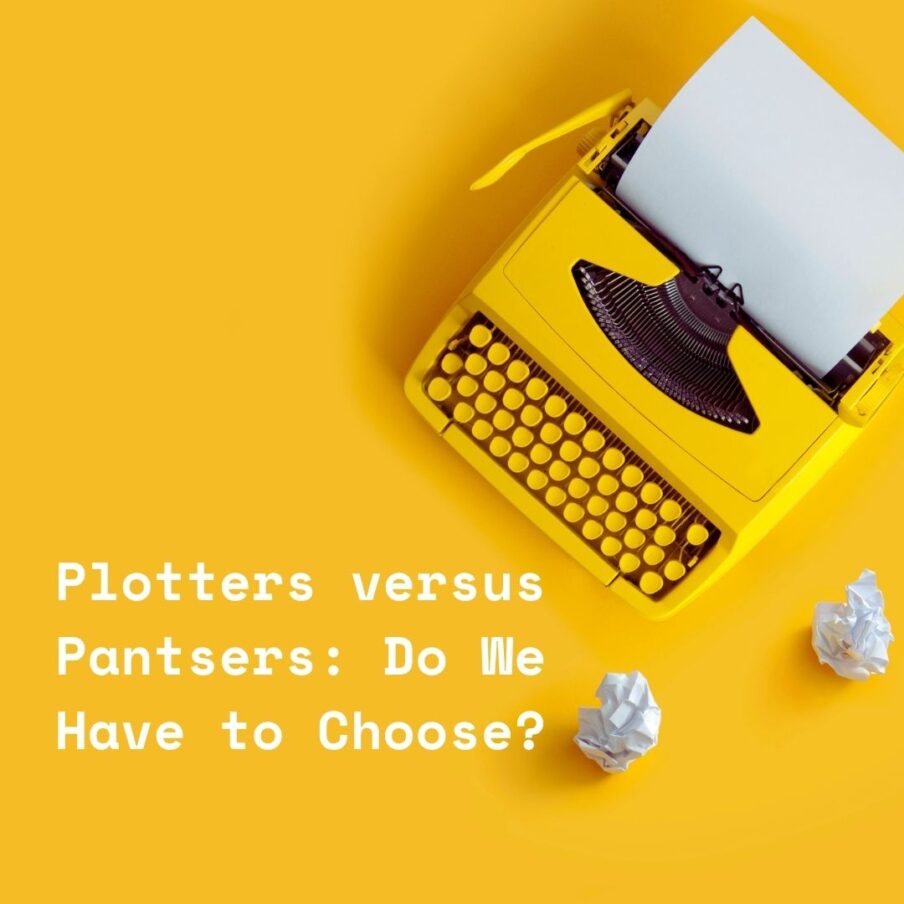by Beth K. Vogt, @bethvogt
When it comes to writing a book, are you a plotter or a pantser?
With that simple question, the writerly “Great Divide” happens once again as we pick sides.
I’m reminded of those awkward middle school dances where the girls hung out on one side of the room and the boys hung out on the other side, while a few brave kids dared to venture onto the dance floor and enjoy the music.
Too often, writers insist they are a “plotter” or “pantser,” believing one way to write a book is best – and allowing their preferred choice to separate them from other writers.
I’d like to see more mingling between plotters and pantsers, recognizing there’s room for both styles of writing on the dance floor, if you will, and that blending plotting and pantsing is beneficial.
How can we do this?
- Realize every novel must be plotted at some point. Go ahead and “pants” away, writer-friends. Listen to your main character when she starts talking to you – and then realize you’re eavesdropping on a tense breakup scene between the hero and heroine that will work well in Act 2. Write it out, as well as a few additional scenes, and then jump back to the meet-cute at the beginning of your romance. You know as well as I do, no one submits a manuscript with the notation, “I’m a pantser, so my novel opens in the middle and then jumps to chapter 1. You’ll figure it out.”

- Admit taking the time to do minimal plotting in the beginning can save you major frustration later. Have you ever read a book and thought, “The characters are dealing with the same things over and over again”? Worse – have you ever been working on a story and thought, “I’m writing the same thing over and over again”? Taking time to plot out the basics – what we like to call Obstacles and Ys in the Road – helps you avoid wandering around in fictional circles or, even worse, staring at a blank page and asking, “What happens next?”
- Enjoy the creative breathing space provided by pantsing. I’m a strong believer in a solid plot, but I’m not afraid to let my characters surprise me as I write my story. Scenes can change – should change – if it means your story improves. Be willing to switch Point of View (POV) if this strengthens the scene’s emotion. Change settings – don’t always settle for a restaurant or the oh-so-familiar home front. If a character hijacks the conversation, see what you discover when you let ‘em talk.
- Change up your style. If you’ve always been a plotter, take a deep breath, exhale, and try a bit of by-the-seat-of-your-pants writing. (Yes, I hear the wailing and gnashing of teeth.) Get the angst out of your system and write a scene, just one scene, without all the prep work. Expand that kernel of a story idea you scribbled down on a piece of paper or typed into a Word document. Or, if you’ve always been a pantser, take thirty minutes to an hour and scribble out a basic outline for your work-in-progress (WIP).
Plotting or pantsing – which do you need to blend into your writing routine?

The award-winning Thatcher Sister Series by Beth K. Vogt, published by Tyndale House, is described as a “Little Women gone wrong” collection of novels highlighting complicated sister relationships in the style of This is Us. NYT bestselling author Lisa Wingate said, “With tenderness and skill, Beth Vogt examines the price of secrets, the weight of tragic loss, and the soul-deep poison of things left unsaid.” The series includes Things I Never Told You, Moments We Forget, and The Best We’ve Been. Unpacking Christmas: A Thatchers Sisters Novella, was released in November 2022 by Never Door Press.

Beth K. Vogt believes God’s best often waits behind the doors marked “Never.” She started out in fiction writing award-winning contemporary romances, including Somebody Like You, which was selected as one of Publishers Weekly’s Best Books of 2014. Beth transitioned to women’s fiction with her Thatcher Sister Series, which she calls “a Little Women gone wrong” collection of books highlighting complicated sister relationships. Published by Tyndale House, the series includes Things I Never Told You, which won the 2019 AWSA Award for Contemporary Novel of the Year, Moments We Forget, and The Best We’ve Been. Beth is also a Christy Award winner, an ACFW Carol Award winner, and a RITA® finalist. An established magazine writer and former editor of the leadership magazine for MOPS International, Beth blogs for Learn How to Write a Novel and The Write Conversation, and also enjoys speaking to writers group and mentoring other writers. She lives in Colorado with her husband Rob, who has adjusted to living with imaginary characters and is also one of Beth’s most trusted brainstormers for her novels. Visit Beth at bethvogt.com.


Comments 1
Great article! I’ve called myself a “plantser” for years. I start out with a beginning, an ending, and few scenes that will take me there all ready in my mind. Then I begin to write and let the characters take me where they will (this is my pantser phase). Once I reach the end, I go into plotter phase & create an outline based on what I’ve written. It helps me see if the plot is strong enough to hold the readers’ attention, as well as identifying plot holes, timeline issues, continuity problems, etc. My first revision is always based on the outline & the problems I’ve identified. For me, it’s the best of both worlds.